Introduction:
In Victoria, Australia, Owners Corporations (OCs) play a vital role in the management and maintenance of shared properties such as apartments, townhouses, and office buildings.
An Owners Corporation is a legal entity created to manage and maintain common property in a strata-titled development, comprising of a group of lot owners who share ownership and responsibility for the upkeep of the common areas.
This article will explore the key aspects of Owners Corporations in Victoria, including the Model Rules, buying into an Owners Corporation, the importance of Owners Corporation meetings, the role of the Owners Corporation Committee, and complaint handling and dispute resolution in relation to Owners Corporations.
Owners Corporation Model Rules
Model rules are the default rules governing an Owners Corporation’s conduct and management under the Owners Corporations Act 2006 (Vic). The Model Rules set out the procedures for the management of an Owners Corporation, such as the election of the Committee, the holding of meetings, and the collection of fees. An Owners Corporation can adopt the Model Rules as is, or they can modify them to suit their specific needs.
Model Rules prescribe the responsibilities of the Owners Corporation Committee and its members, such as the duty to maintain the common property, enforce the rules, and manage the finances. Model Rules also outline the rights and obligations of lot owners, such as the obligation to pay fees and levies, the right to vote at Owners Corporation meetings, and the right to access the common property.
Model Rules can be amended by a special resolution passed by the Owners Corporation, which requires a 75% majority vote.
Buying into an Owners Corporation
When buying into an Owners Corporation, it is essential to conduct due diligence to ensure that the property is well-managed and financially stable. This involves reviewing the Owners Corporation’s financial statements, minutes of meetings, and rules and regulations.
Before purchasing a lot, a prospective buyer should obtain a copy of the Owners Corporation’s certificate of insurance, which outlines the insurance coverage of the building and common property. The buyer should also be aware of any ongoing maintenance issues or planned maintenance that may impact the property’s value.
When purchasing a lot in an Owners Corporation, the buyer automatically becomes a member of the Owners Corporation and is bound by its rules and regulations. The buyer is also liable for the payment of fees and levies, which cover the maintenance and management of the common property.
Why Owners Corporation Meetings are Important
Owners Corporation meetings are essential for the proper management and governance of the Owners Corporation. Meetings provide an opportunity for lot owners to discuss and make decisions on matters affecting the property, such as maintenance, repairs, and improvements.
Annual General Meetings (AGMs) must be held once a year, and all lot owners are entitled to attend and vote. AGMs are an opportunity for the Owners Corporation to present its financial statements, elect the Committee members, and discuss any other business that requires the attention of the Owners Corporation.
Special General Meetings (SGMs) can be called by the Committee or lot owners to discuss and make decisions on specific matters, such as a proposed special levy or changes to the Model Rules. A quorum must be present for the meeting to proceed, which requires a certain percentage of lot owners to attend in person or by proxy.
The Role of the Owners Corporation Committee
The Owners Corporation Committee is responsible for the day-to-day management of the Owners Corporation, including the maintenance and repair of the common property, the enforcement of the rules and regulations, and the management of the finances.
The Committee is made up of members who are elected at the annual general meeting. The Committee has a range of duties, including managing finances, enforcing the Owners Corporation rules, arranging maintenance and repairs, and liaising with external parties such as contractors and service providers.
The Committee also has the power to make decisions on behalf of the Owners Corporation, as long as they comply with the Act and Regulations. The Committee must consist of at least three members, who are elected at the AGM.
Complaint Handling and Dispute Resolution in relation to Owners Corporations
Owners Corporations in Victoria have dispute resolution procedures in place to manage conflicts between members, Committees, and Owners Corporation managers.
Members can raise complaints through the Owners Corporation manager, the Committee, or at a general meeting. The dispute resolution process includes informal resolution, mediation, and tribunal or court proceedings if necessary. It is important to note that disputes can be costly, time-consuming, and may damage relationships between members.
Therefore, it is essential to try and resolve disputes in a timely and respectful manner. Owners Corporation managers, Committee members, and members should have an understanding of the dispute resolution process and work together to try and resolve issues.




